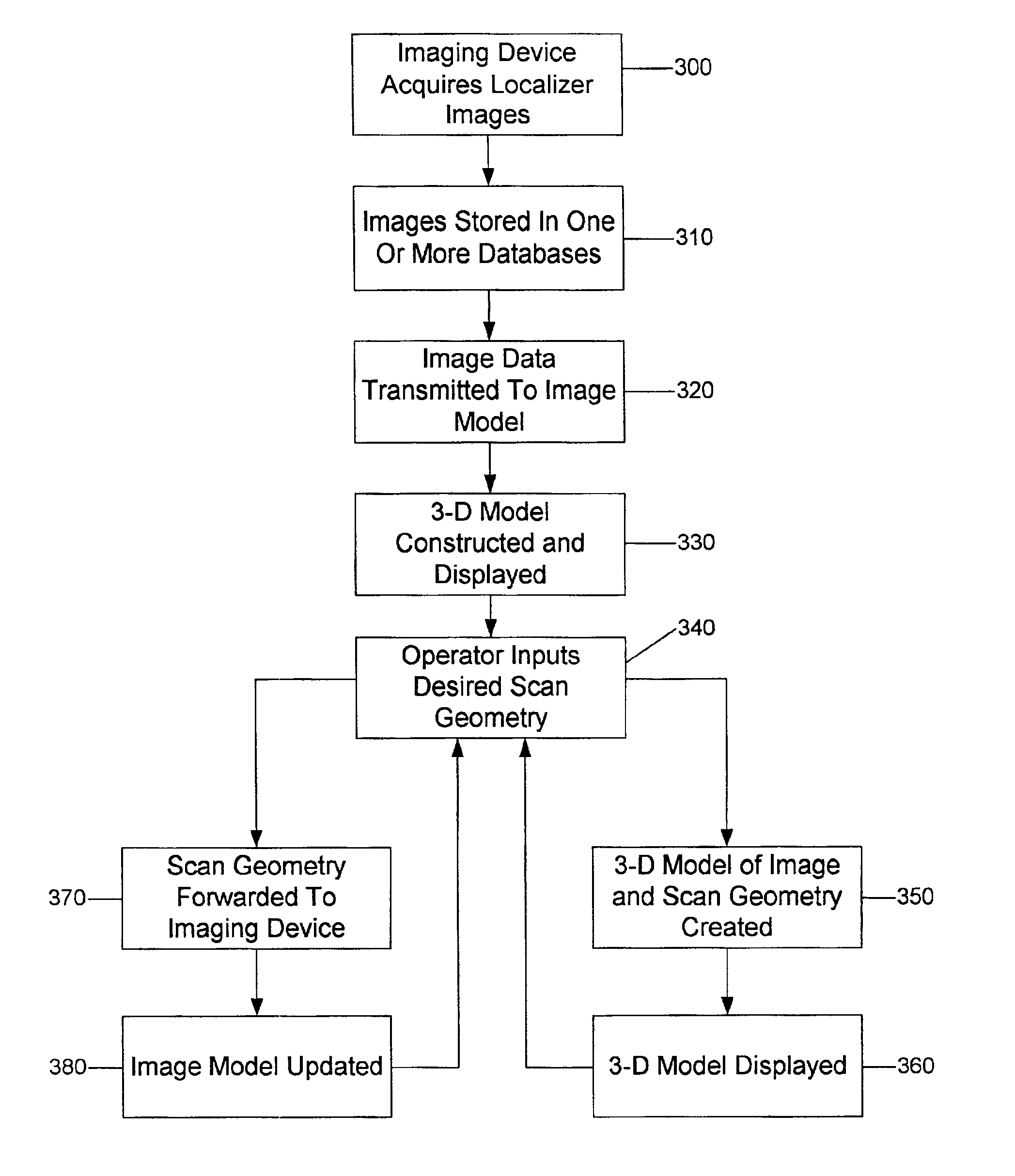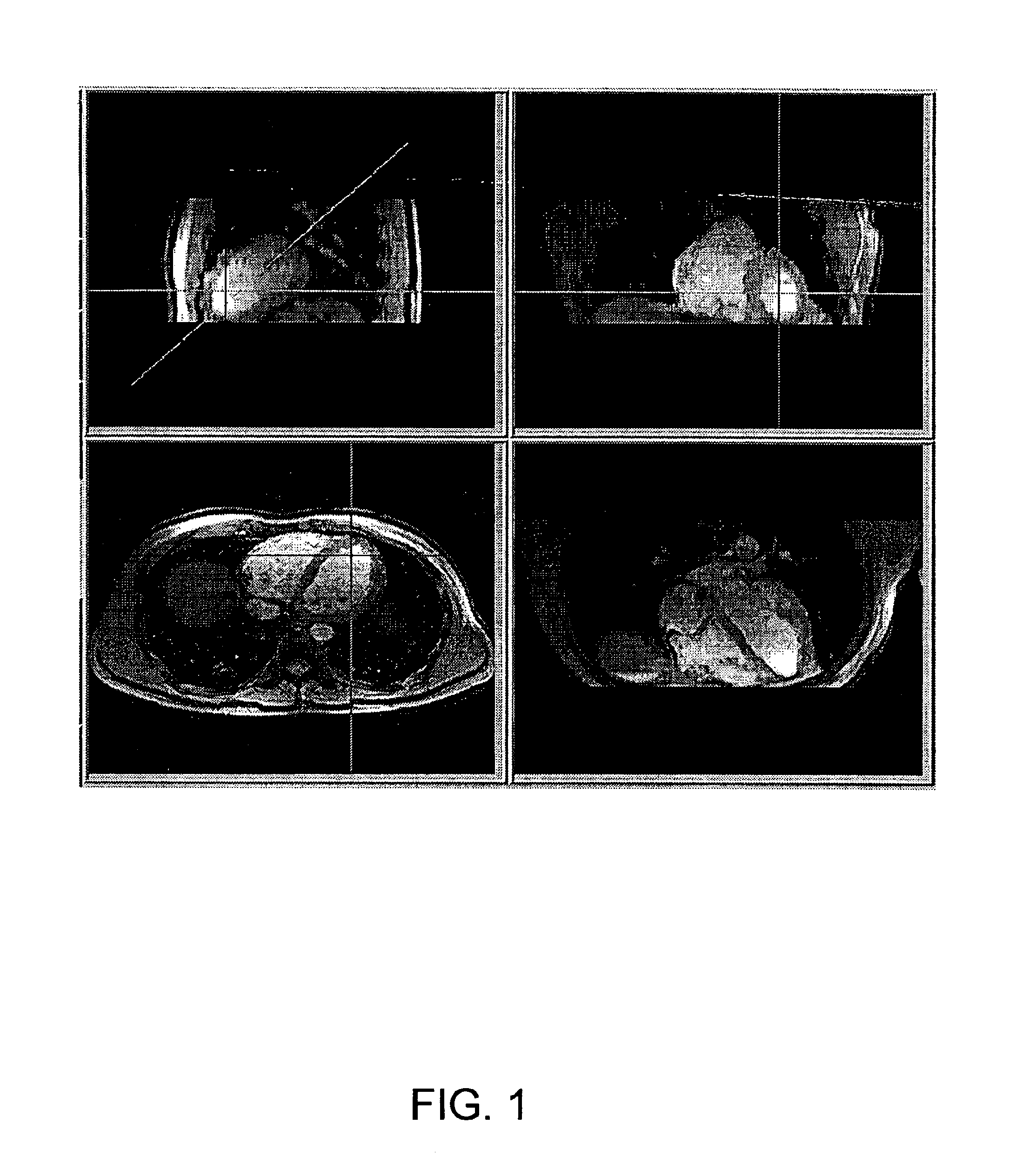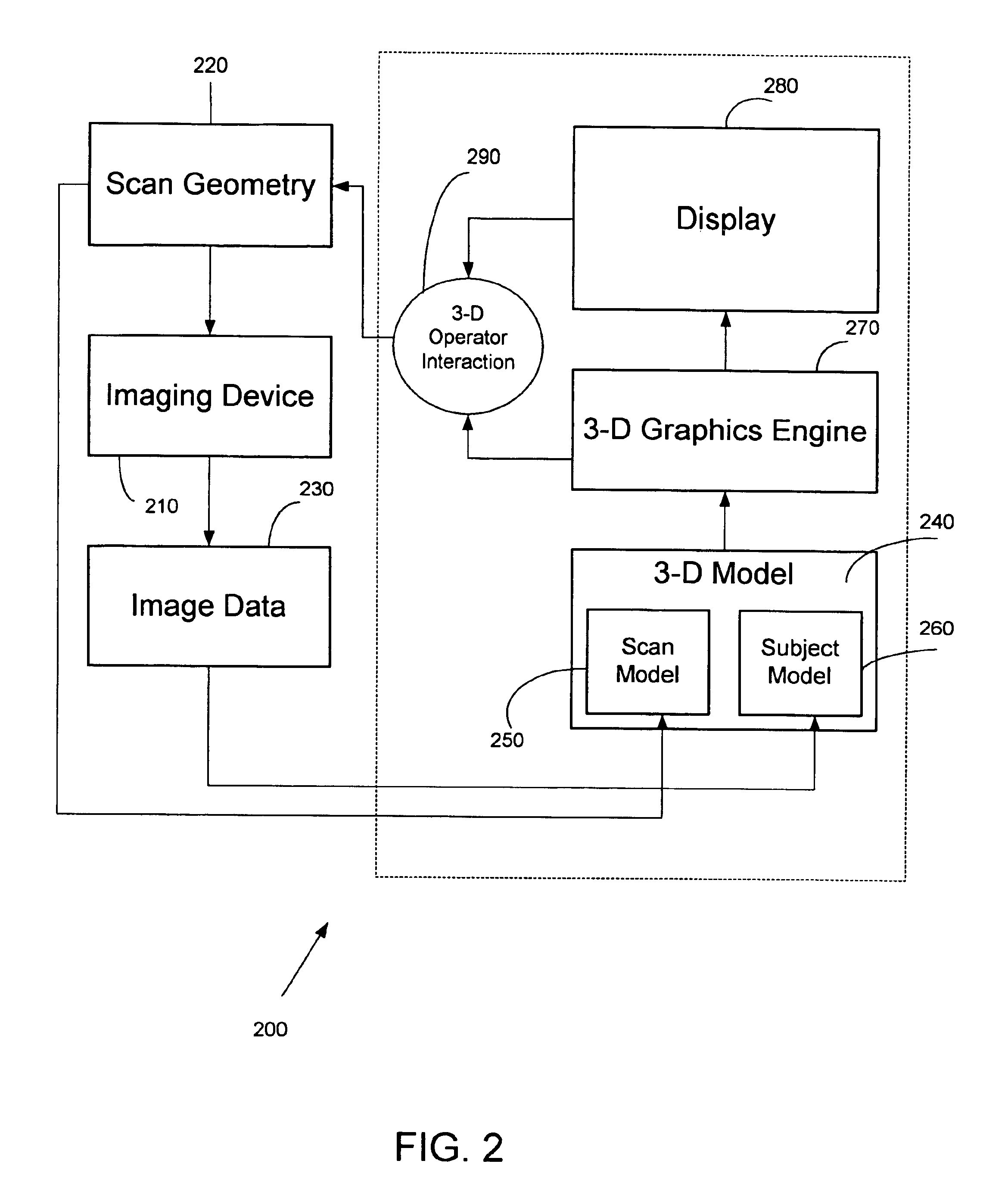Systems, methods and computer program products for the display and visually driven definition of tomographic image planes in three-dimensional space
a technology of three-dimensional space and tomographic image, applied in the field of three-dimensional tomographic imaging, can solve the problems of difficult process of determining the desired scan geometry in many applications, difficult to determine the preferred orientation and location of the image plane, and the scan plane no longer can be defined perpendicular to the displayed image, etc., to achieve easy detection and easy and comprehensive understanding.
- Summary
- Abstract
- Description
- Claims
- Application Information
AI Technical Summary
Benefits of technology
Problems solved by technology
Method used
Image
Examples
Embodiment Construction
[0031]The present invention now will be described more fully hereinafter with reference to the accompanying drawings, in which preferred embodiments of the invention are shown. This invention may, however, be embodied in many different forms and should not be construed as limited to the embodiments set forth herein; rather, these embodiments are provided so that this disclosure will be thorough and complete, and will fully convey the scope of the invention to those skilled in the art. Like numbers refer to like elements throughout.
[0032]FIG. 1 shows three localizer images displayed on a screen, where the images include intersection lines as overlay graphics depicting the anticipated location and orientation of the next scan, and the geometry of a new image, according to the prior art. The geometry of a new image, shown in the lower right corner, is defined by editing intersection line graphics in one or more existing views. This approach is used both in image reformatting, illustrat...
PUM
 Login to View More
Login to View More Abstract
Description
Claims
Application Information
 Login to View More
Login to View More - R&D
- Intellectual Property
- Life Sciences
- Materials
- Tech Scout
- Unparalleled Data Quality
- Higher Quality Content
- 60% Fewer Hallucinations
Browse by: Latest US Patents, China's latest patents, Technical Efficacy Thesaurus, Application Domain, Technology Topic, Popular Technical Reports.
© 2025 PatSnap. All rights reserved.Legal|Privacy policy|Modern Slavery Act Transparency Statement|Sitemap|About US| Contact US: help@patsnap.com



